13+ Healthy Greens for Smoothies
Have you ever tried adding greens to your smoothies? If not, you’re missing out on a great way to get more nutrients into your diet. This article includes my list of favorite healthy greens for smoothies including spinach, kale, collard greens, Swiss chard, and more. I’ve also included a basic green smoothie recipe to help get you started!
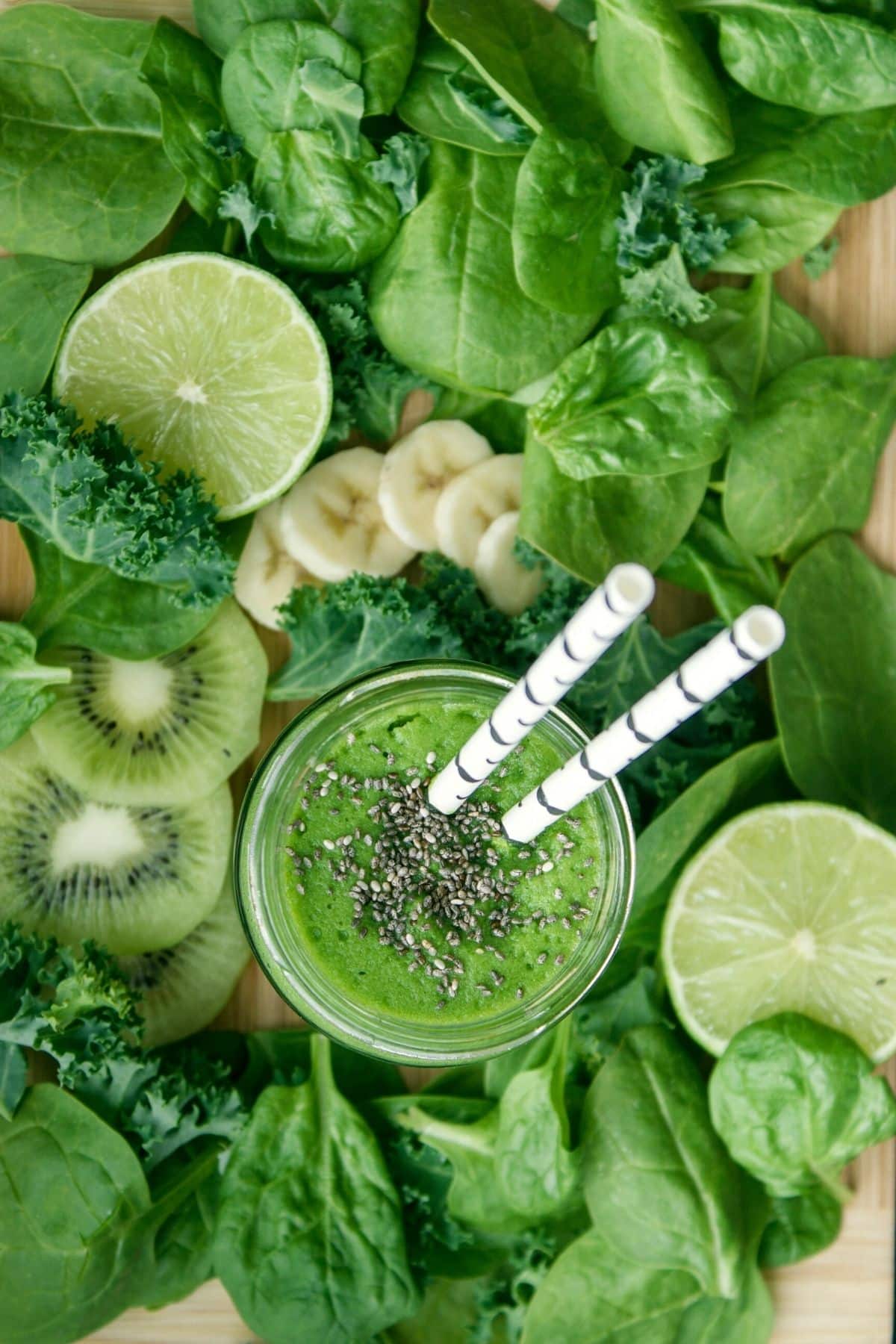
Favorite Greens for Smoothies
Here are the best healthy greens for smoothies. These are great for green smoothie beginners or for pros! I’ve also included tips at the end of this article for making your green smoothies taste palatable for everyone.
1. Spinach
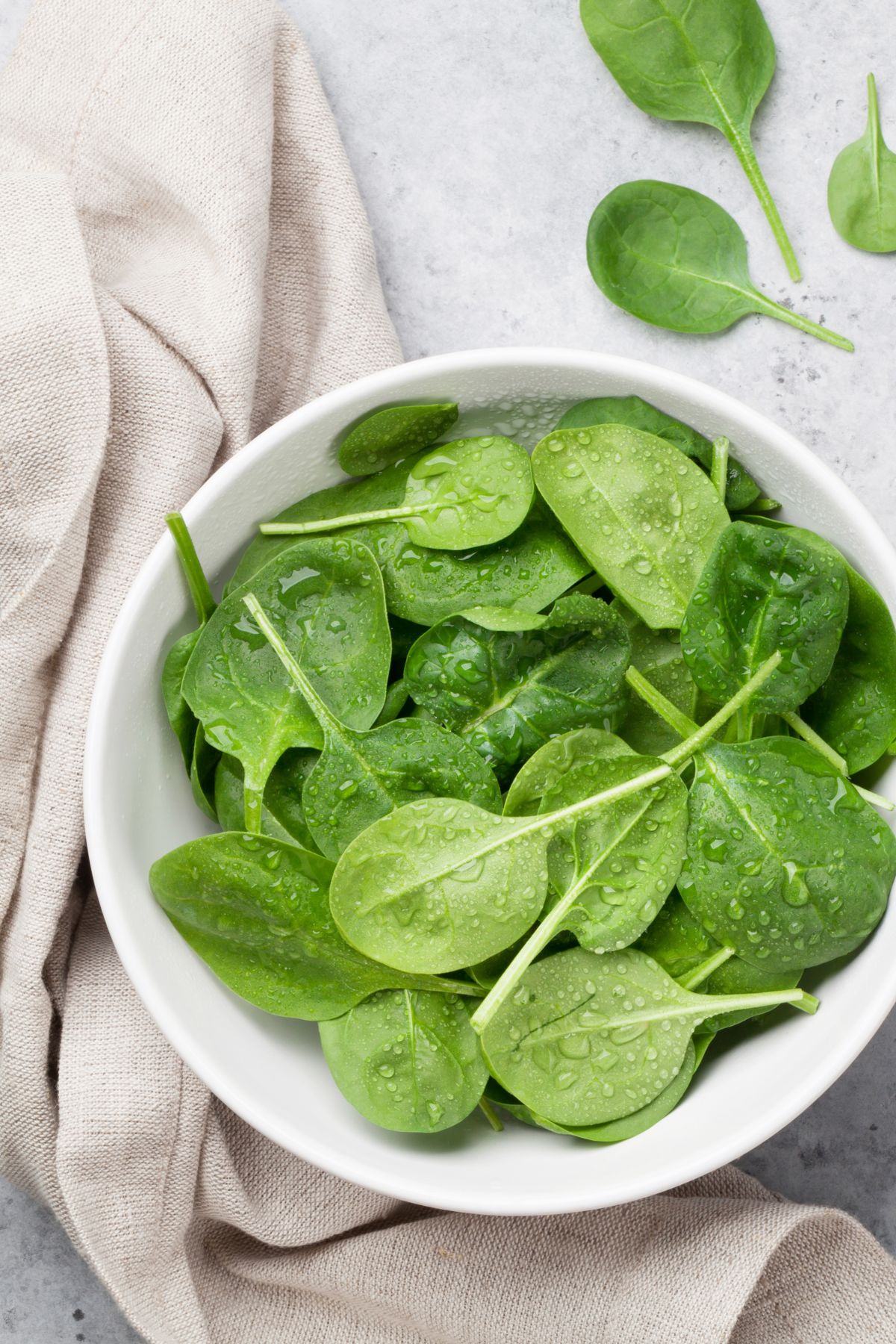
Pros
- Easy to find
- Mild in flavor
- Very nutritious
Cons
- Will turn your smoothie green in color
- Can be overused
- Contains oxalates
Mild-tasting spinach is the classic green leafy vegetable used in smoothies.
Baby spinach tends to be the most popular choice because it is sweeter in flavor and yields a smoother texture. On the other hand, it is more expensive than regular spinach and there is no difference in terms of nutrition, so it’s worth giving regular spinach a try too!
A good source of calcium, fiber, folic acid, iron, and vitamins (including beta carotene, vitamin B6, and vitamin C), spinach is also particularly rich in vitamin K. In fact, just one cup of raw spinach provides an impressive 181% of the DV (daily value)! Vitamin K is important in the building of bones and helps create the proteins that the body needs for blood clotting.
Recommended recipe using spinach: Green Apple Smoothie with Spinach, Apple Banana Spinach Smoothie, or my Food Processor Smoothie with mango and spinach
You might also like this article on how to freeze spinach for smoothies.
2. Kale
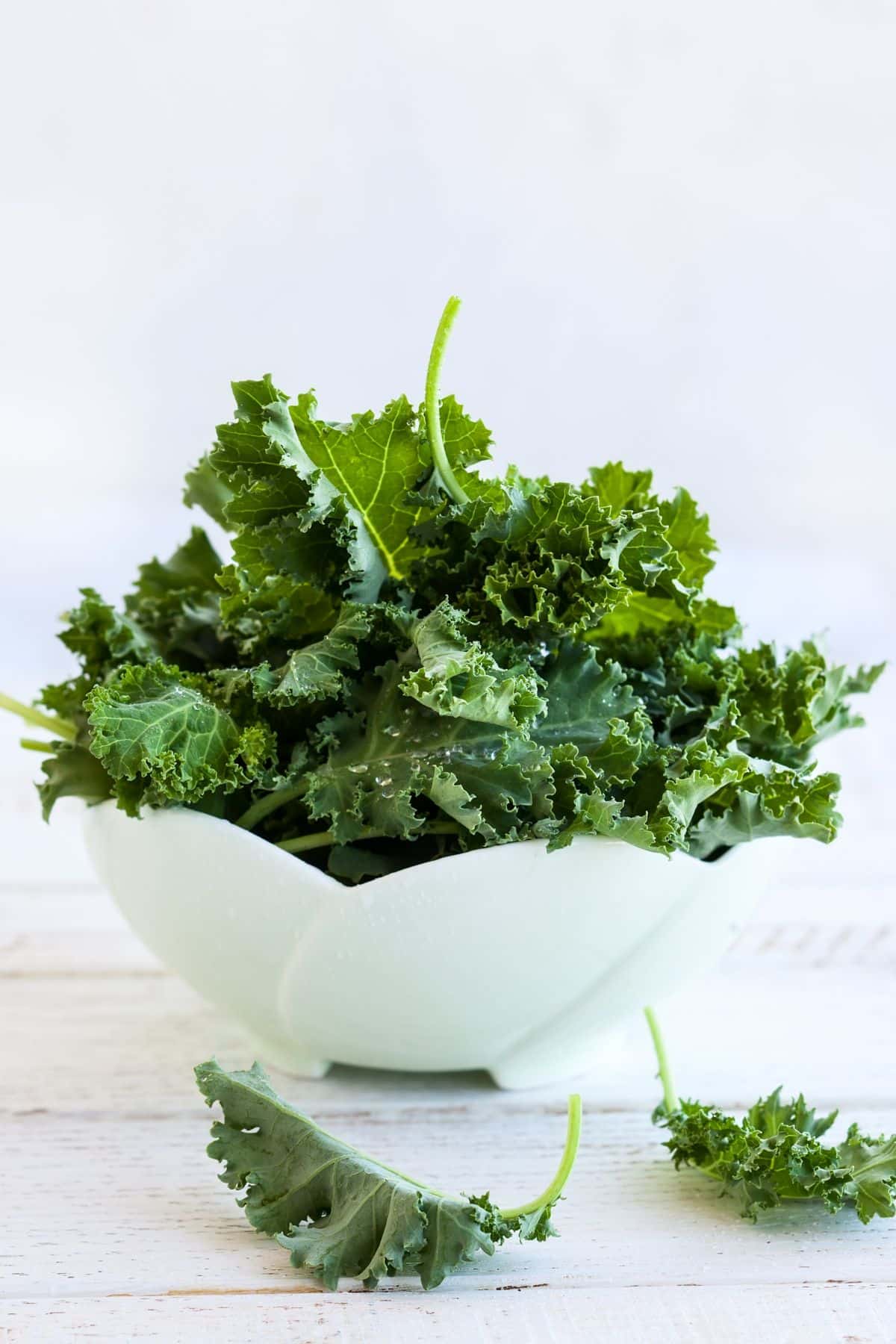
Pros
- Budget-friendly
- Easy to find
- Considered a superfood
Cons
- Can have a strong flavor
- May be harder to blend
- Kids may not like it
Kale sometimes gets a bit of a bad rap when it comes to smoothies because it has quite a strong, peppery flavor and isn’t to everyone’s taste.
But it’s so nutritious that it is well worth considering!
One of the most nutrient-dense greens on the planet, kale is a rich source of vitamins (including A, C, B6, and K), magnesium, potassium, copper, and calcium. One cup also provides a whopping 26% of the DV of manganese and is chock-full of antioxidants.
Kale and other leafy greens are also a key part of the MTHFR diet.
And although there is no science to back up the theory, many people find that kale helps them lose weight. This is because it provides the bulk to help them feel full without providing the calories.
To make your kale smoothies more enjoyable, try buying baby kale instead of the standard stalks as the flavor is milder and the texture is easier to blend. Black Tuscan kale and curly kale are also gentler in flavor, as is frozen kale.
You could try blending the kale with fruits or sweet veggies to tone down the bitterness. But if you prefer to avoid sweet foods, try adding citrus juice to your kale smoothie instead. The acidity seems to neutralize the bitterness and makes your smoothie more refreshing.
You can also try steaming the kale before you put it into your smoothie. Steaming your greens can also help reduce the oxalate level of vegetables.
Recommended recipe using kale: Kale Weight Loss Smoothie
3. Swiss chard
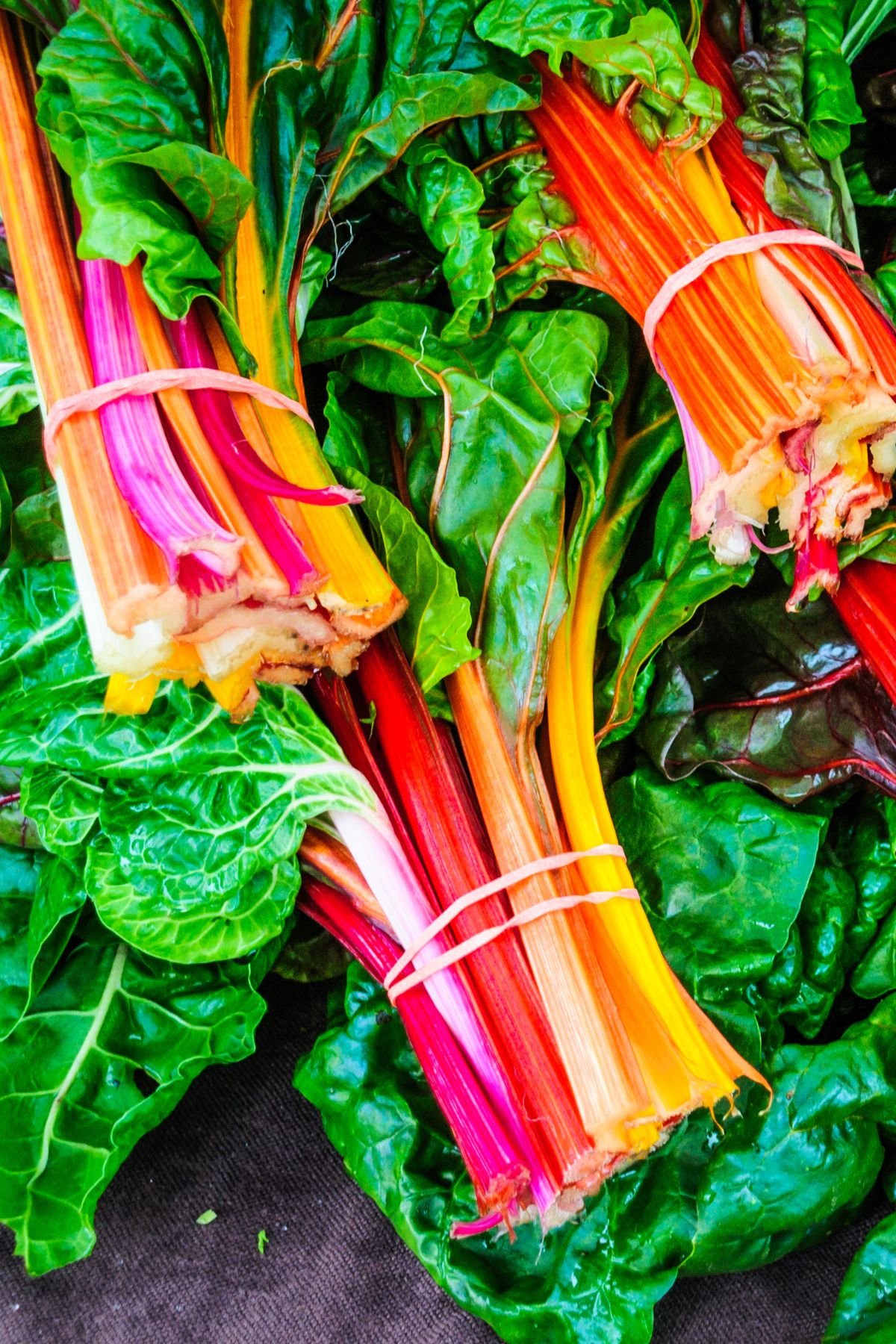
Pros
- Has a tender texture
- Very nutritious
- Fairly easy to find
Cons
- Has a stronger flavor than spinach
- Contains oxalates
- Kids may not like flavor
One of the best greens for smoothies, Swiss chard has a nice, soft texture that’s easy to blend. It has an earthy, slightly salty flavor that some people enjoy with fruit for that yummy sweet/salty contrast.
The dark green leaves of Swiss Chard are rich in iron, calcium, and vitamins A, C, E, and K, plus a flavonoid (healthy plant compound) called vitexin. Studies have shown that vitexin plays an important part in the prevention of heart disease.
People tend to discard the stalks of Swiss Chard, which can be yellow, green, white, or red. But they are very nutritious, so – if your blender is powerful enough – chop them up and add them to your smoothie.
Recommended recipe using Swiss chard: Swiss Chard Smoothie
4. Collard greens
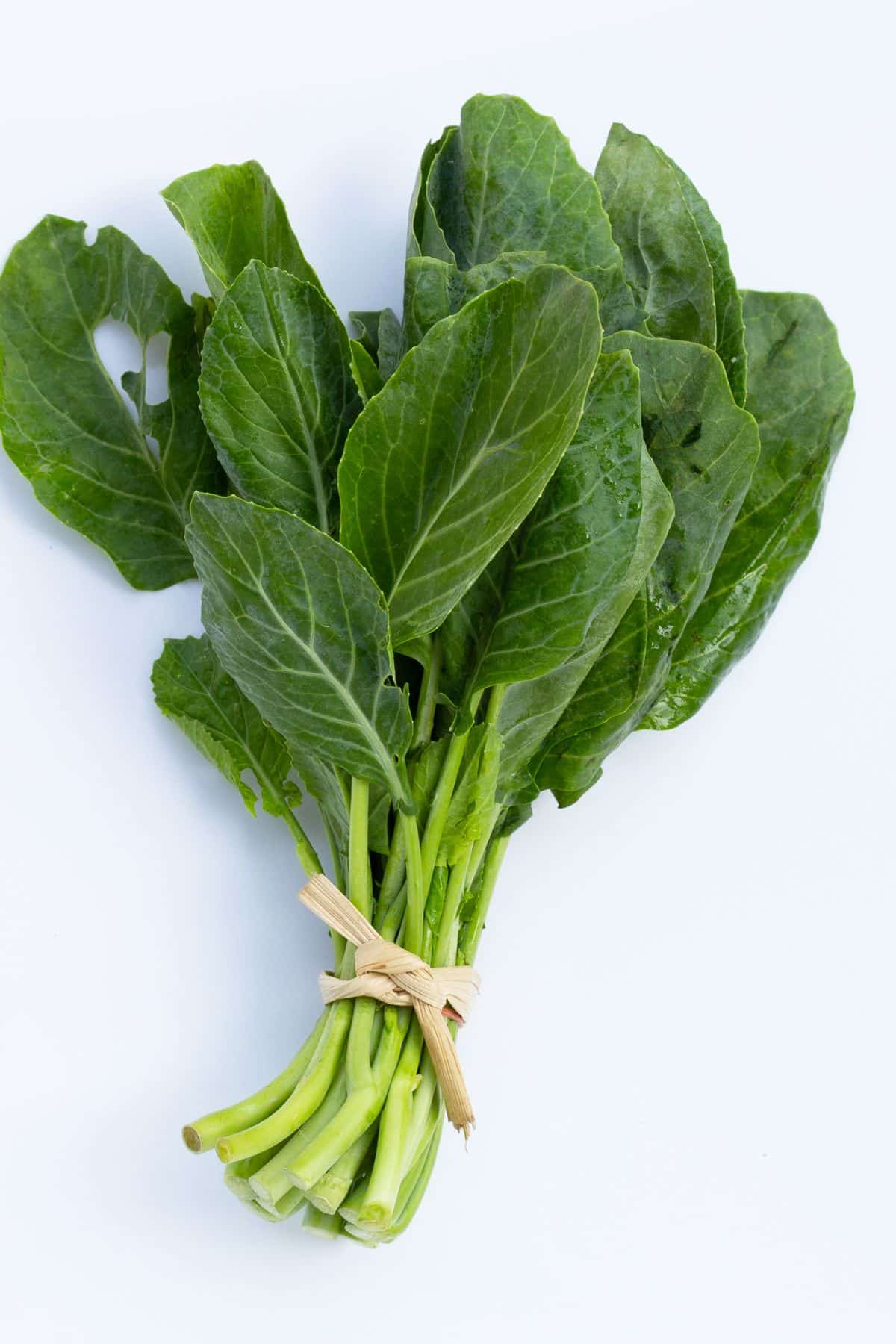
Pros
- High in calcium
- Easy to find
- High in vitamin K
Cons
- May be more expensive than spinach
- Has a strong flavor
- Has a thick texture
Related to kale, collard greens have a similar texture and slightly bitter flavor. In addition to containing plenty of calcium and folate, they are one of the best leafy sources of vitamin K. One cup of cooked collard greens provides a massive 1,045% of the DV (daily value).
If you find the flavor a little too strong for your liking, try adding sweeter-tasting fruits or veggies, or an acidic ingredient like lemon juice. Another good option is to throw in some spices like ginger – this is an easy way to significantly alter the flavor without adding sugar or calories.
Recommended recipe using collard greens: Collard Greens Smoothie
Collard greens.
5. Bok choy
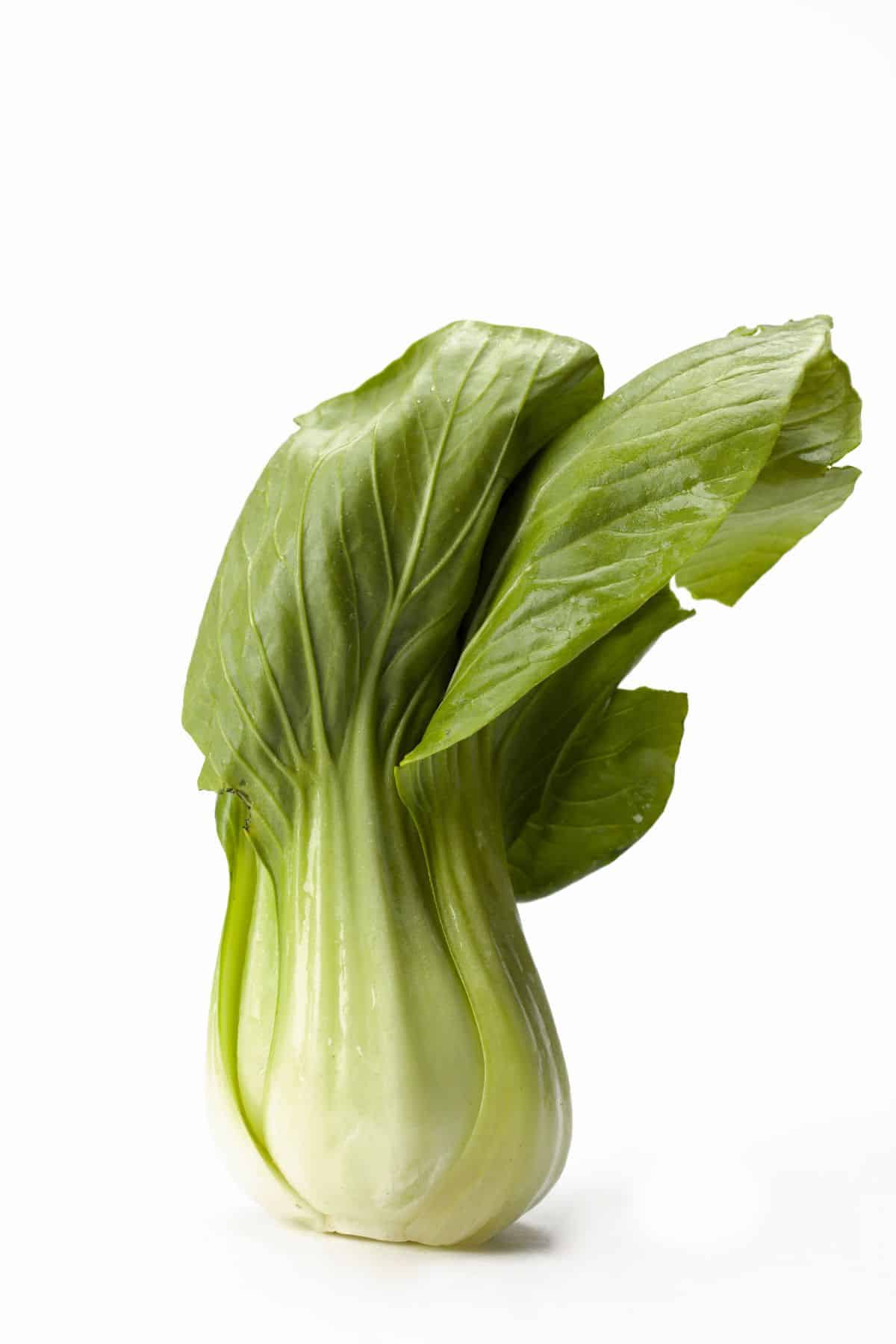
Pros
- Very high in nutrients
- Mild in flavor
- Contains selenium
Cons
- May be harder to find
- Has a unique flavor that some may not like
- Must be washed to remove dirt between leaves
Also known as pak choi or Chinese cabbage, bok choy is better known as a stir fry ingredient than as a healthy addition to green smoothies!
But it is an excellent choice, packed with vitamins and fiber. It also contains selenium, which has been shown to reduce the risk of cancer and support thyroid function.
Bok choy has quite a mild taste in small amounts but can taste quite bitter in larger quantities. Try blending it with other greens or fruit for the best-tasting results.
6. Herbs
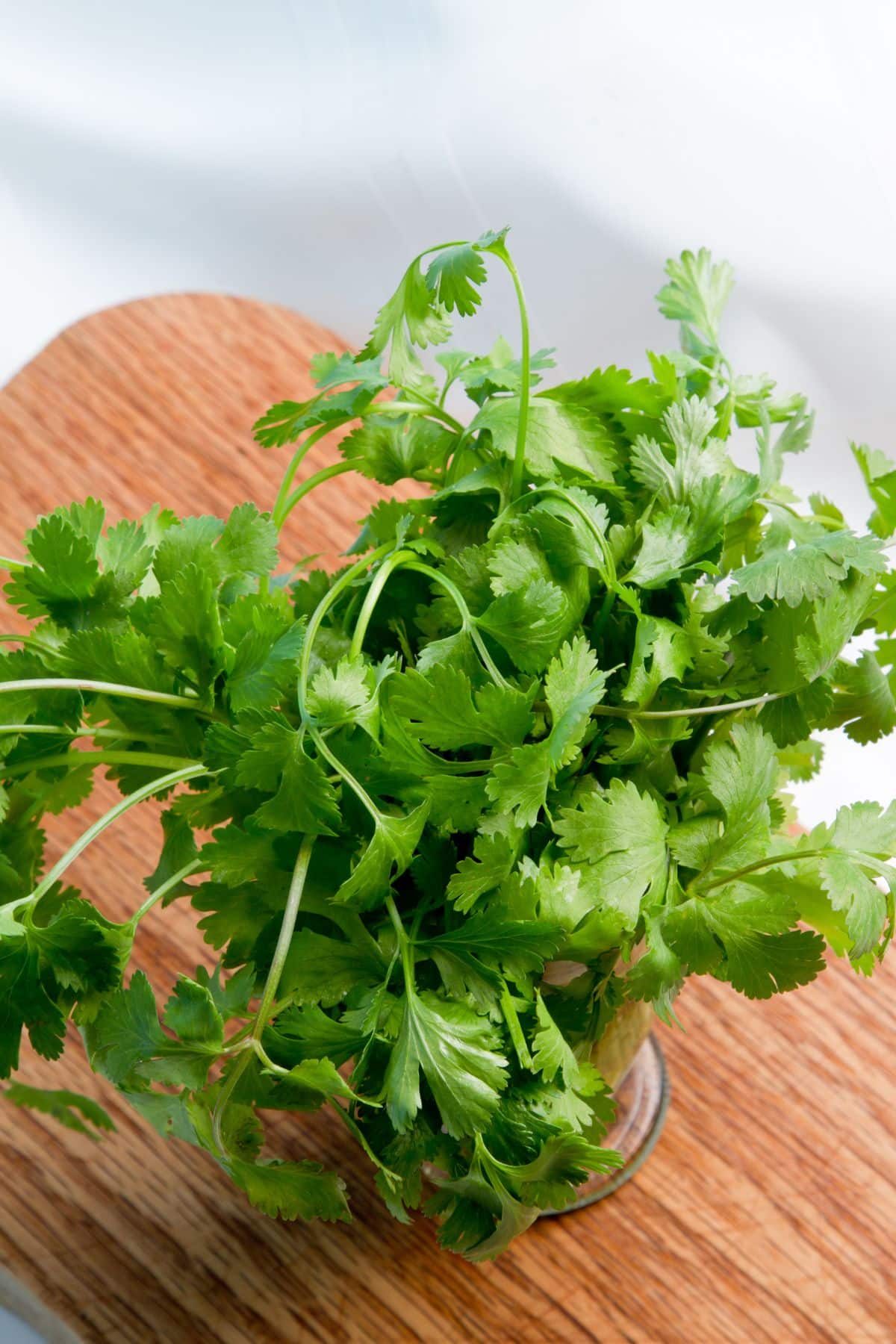
Pros
- Can add variety of flavor
- Very nutritious
- Easy to find and budget-friendly
Cons
- Some herbs have a strong flavor
- Possible drug interactions
- Possible allergic reactions
Herbs can make a fantastic addition to your green smoothies, subtly altering the flavor and adding health benefits of their own! Since they can be quite strong in taste, it’s best to experiment and only add a little at first.
Good herbs to try include mint – which can be great for digestion – and basil, which provides warmth to your smoothies and can offer protection against cancer.
Parsley is another great choice and really brightens the flavor of your smoothie while offering detoxifying benefits. Or try cilantro, which adds refreshing citrus notes.
Recommended smoothie using fresh mint: Anti-Cancer Smoothie
7. Dandelion greens
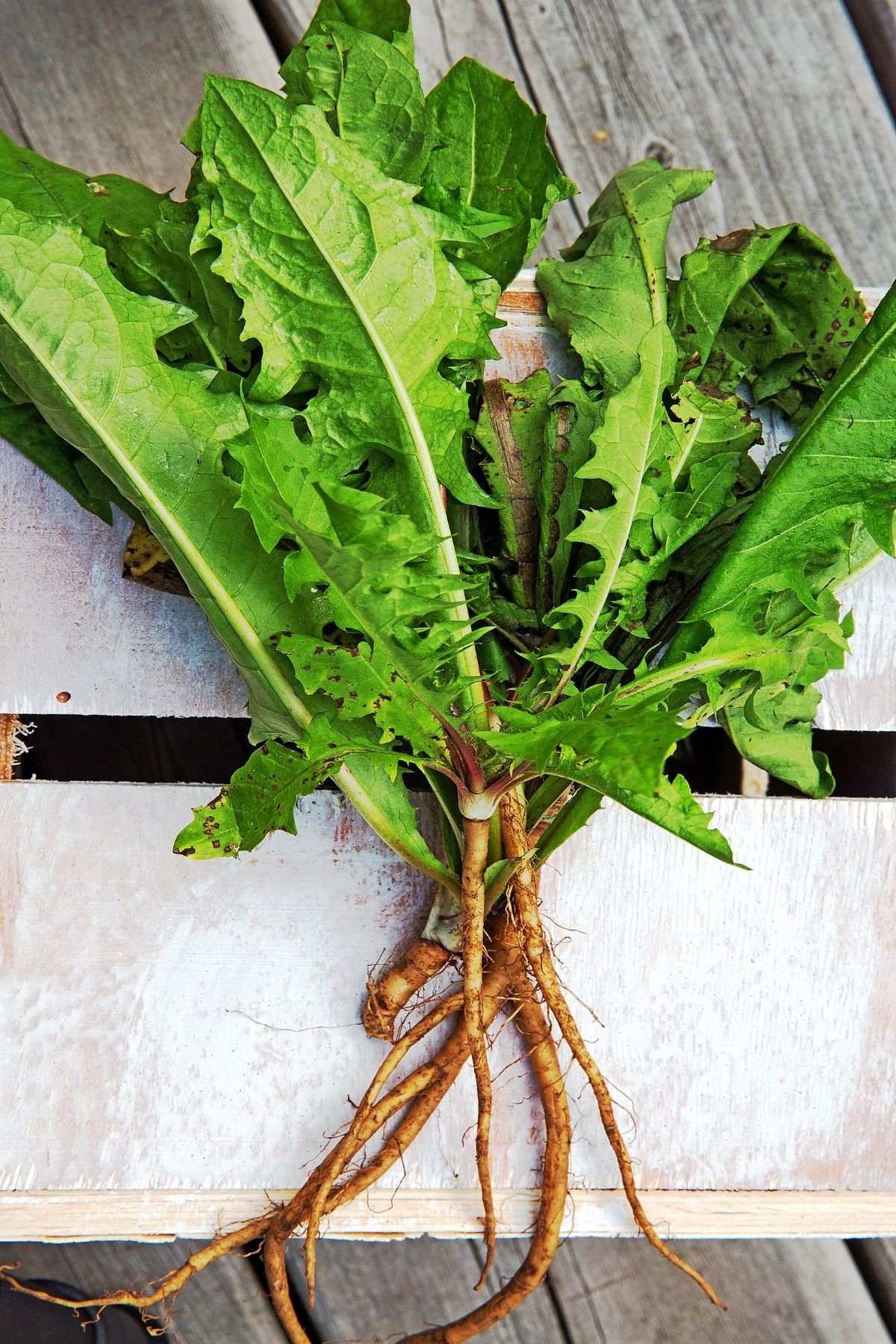
Pros
- High in calcium and iron
- Also contains other vitamins
- You can harvest your own
Cons
- Can have a bitter flavor
- May cause digestive discomfort
- Possible drug interactions
The entire dandelion plant is edible – and if you’ve never given the greens a try, you’ve been missing out on a treat! Delicious braised as a side dish with dinner, they are also fabulous in smoothies, to which they add a whole host of nutrients.
Loaded with vitamins A, C, E, and K, dandelion greens contain a wide variety of minerals including iron and calcium.
They also have anti-inflammatory properties and can be useful in regulating diabetes.
You can find dandelion greens in the produce aisle near other leafy greens, or even harvest your own! The youngest leaves have the best flavor and you can simply snip them off with a pair of clean scissors.
Recommended recipe: Liver Detox Smoothie
8. Romaine lettuce
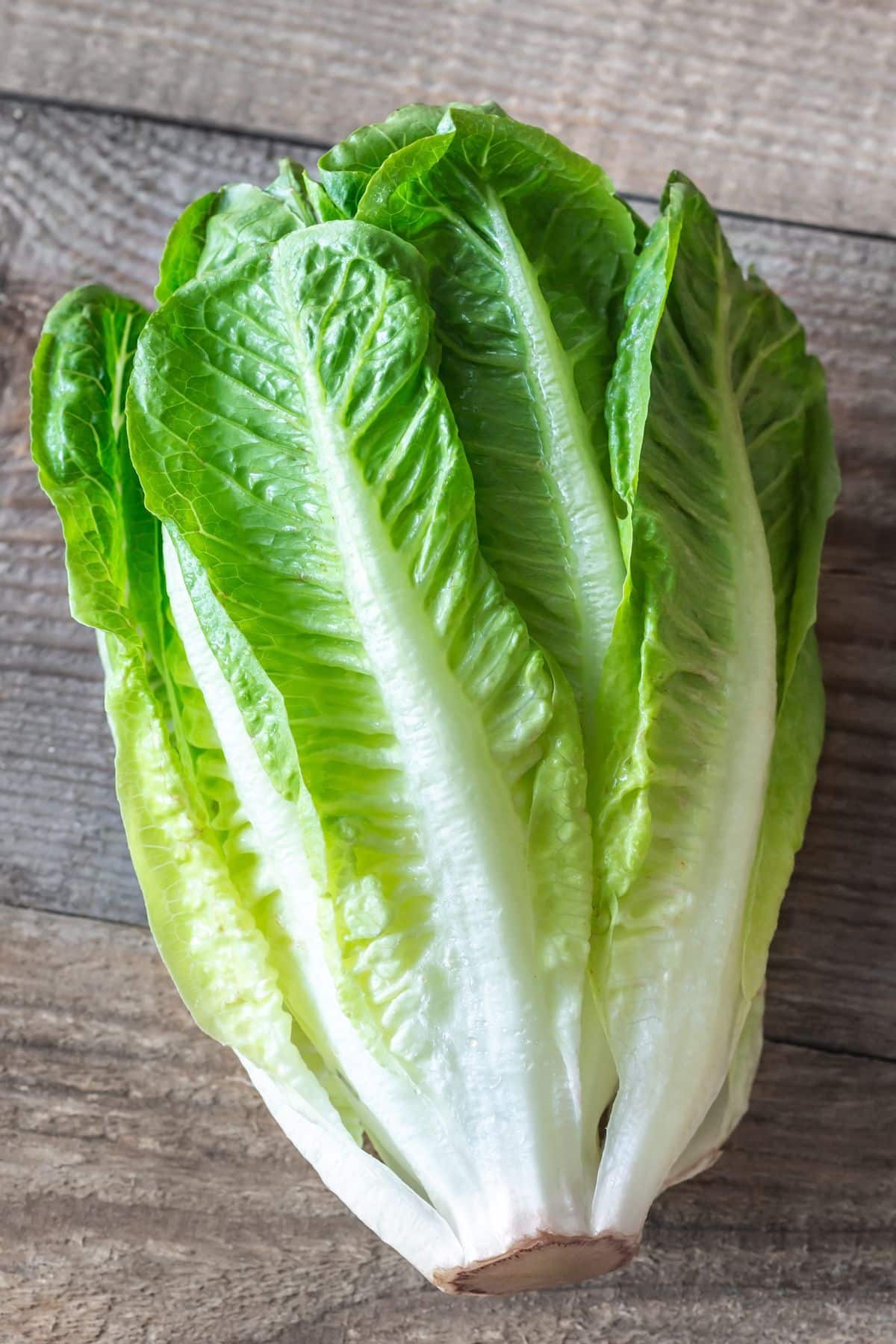
Pros
- Budget-friendly
- Easy to find
- Contains folate and other nutrients
Cons
- Can be contaminated (must wash thoroughly)
- Lower in nutrients than other leafy greens
- Can have a strong flavor when blended
This is one of the easiest leafy greens to include in your smoothies as it is so mild in taste.
It is one of the most nutritious types of lettuce you can buy, containing folate, vitamins C and K, and the beta-carotene that our bodies turn into vitamin A.
Its high water content makes it great for hydration and it is incredibly easy to blend. This makes it ideal if you have a less powerful blender and you won’t find yourself stuck with bits that won’t break down, as you might with a tougher veggie like kale.
9. Watercress
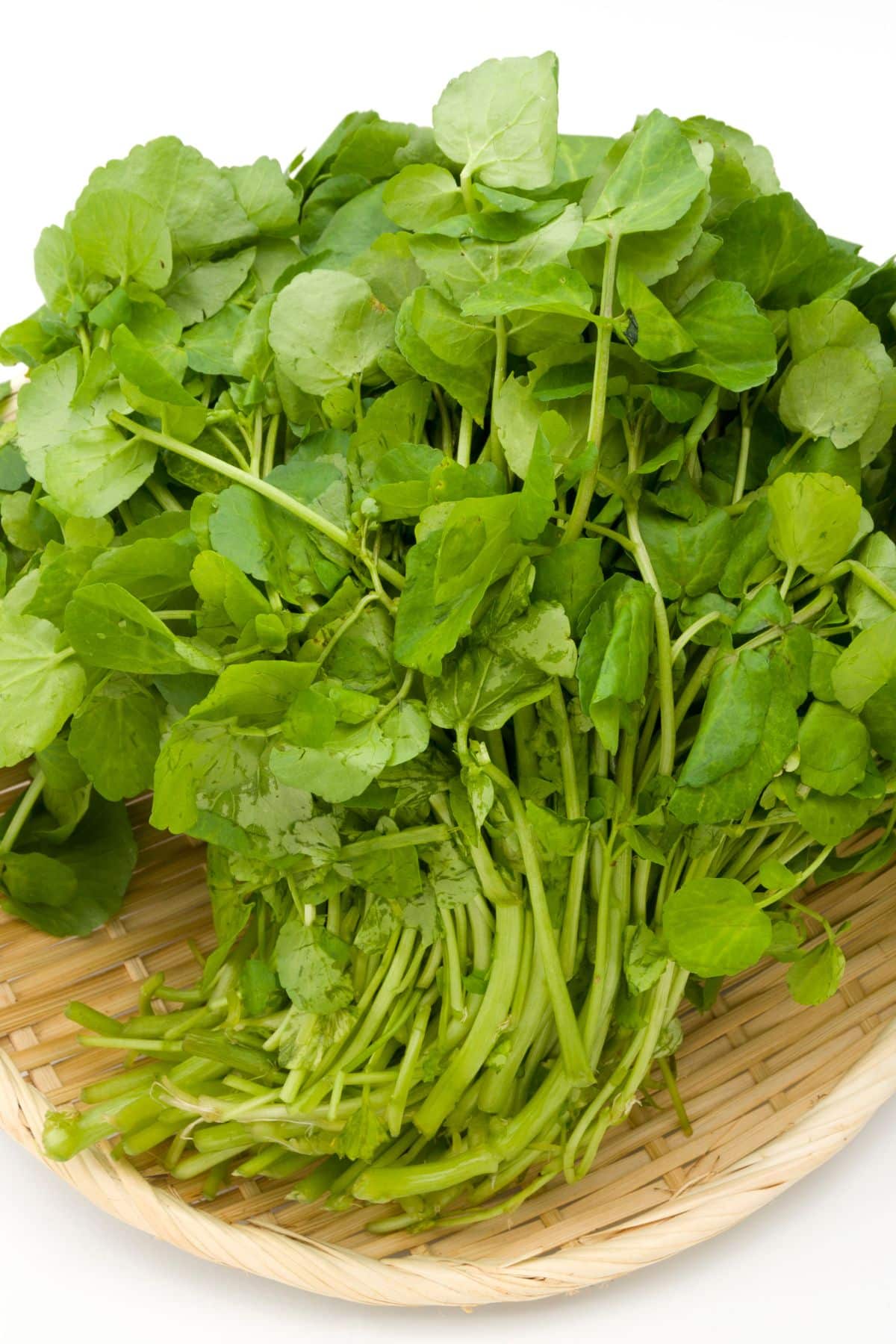
Pros
- Very nutritious
- Is considered a superfood
- Contains many antioxidants
Cons
- Has a very strong flavor
- Possible waterborne pathogens (must wash thoroughly)
- Too much can affect thyroid
This aquatic plant comes from the Brassicaceae family and is related to arugula and mustard greens.
It has a bitter and slightly spicy flavor which some people love. That being said, it doesn’t appeal to everyone. For that reason you might want to blend it with sweet or acidic flavors, because it’s definitely worth trying to include in your daily smoothie.
Nutrient dense, watercress holds first place on the US Centers for Disease Control’s list of Powerhouse Fruits and Vegetables.
It is rich in antioxidants and consuming watercress raw makes the very most of its benefits. It pairs well with many other fruits and veggies and tastes wonderful with avocado and lime.
See my related article with watercress alternatives.
10. Frozen broccoli florets
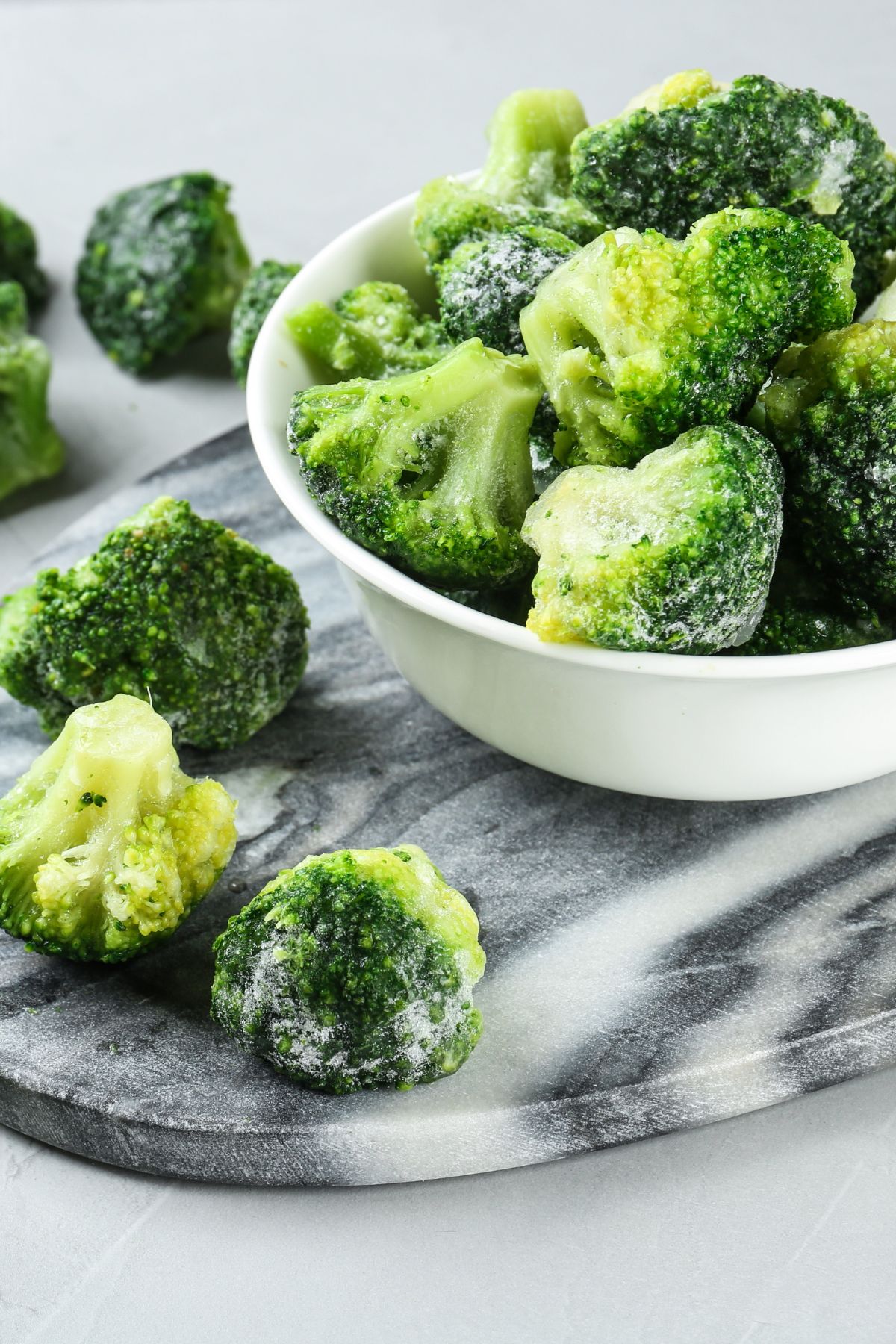
Pros
- Convenience
- Budget-friendly
- Fairly mild in flavor
Cons
- May cause a watery texture to smoothies
- May cause gas and bloating
- May be gritty if not well blended
You may not have considered using broccoli in a smoothie because the florets can be challenging to pulverize. But frozen broccoli is much easier to use and blends well while creating a cool and refreshing result.
Broccoli is a nutritional powerhouse, providing 84% of the reference daily intake (RDI) of vitamin C in just half a cup. That’s more than you get from half an orange.
Along with other cruciferous vegetables, it offers protection against cancer and can even help keep blood sugars under control.
Recommended smoothies using frozen broccoli: Anti-Cancer Smoothie or Broccoli Smoothie with Pineapple
11. Frozen zucchini
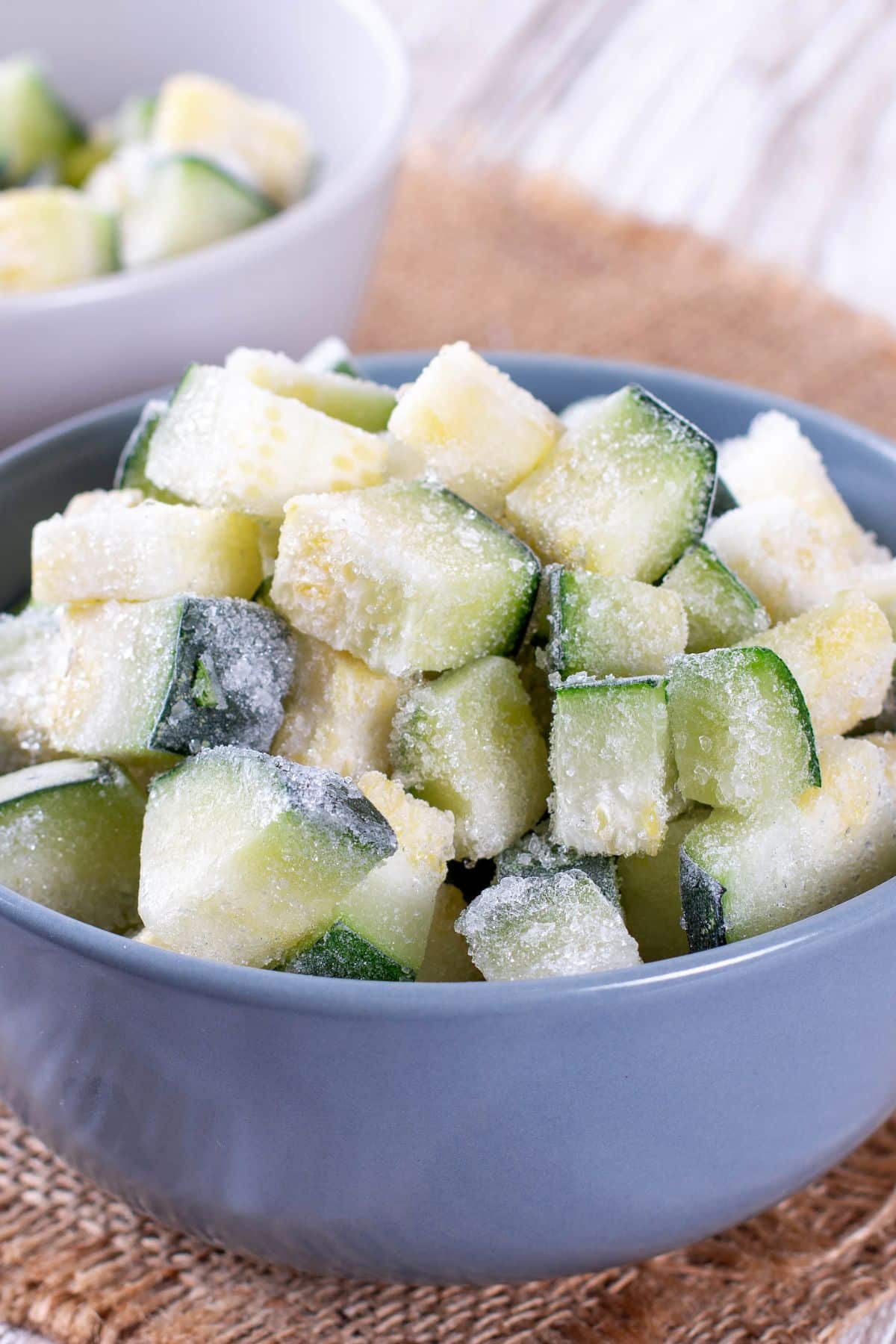
Pros
- Mild in flavor
- You can grow and freeze your own
- Adds a creamy texture
Cons
- Lower in nutrition than other veggies
- May be harder to blend
- Can get freezer burn
If you tend to use frozen bananas in a lot of your smoothies, you might want to try swapping them for frozen zucchini instead! It still delivers a nice, creamy texture, but without the extra calories. Frozen zucchini is higher in fiber too.
It has quite a neutral flavor so it’s ideal for blending with stronger-tasting leafy greens to reduce their bitterness. And it comes with a little nutritional punch of its own, providing a range of vitamins and minerals along with some useful antioxidant compounds.
Recommended recipe using zucchini: Zucchini and Strawberry Smoothie
12. Beet Greens
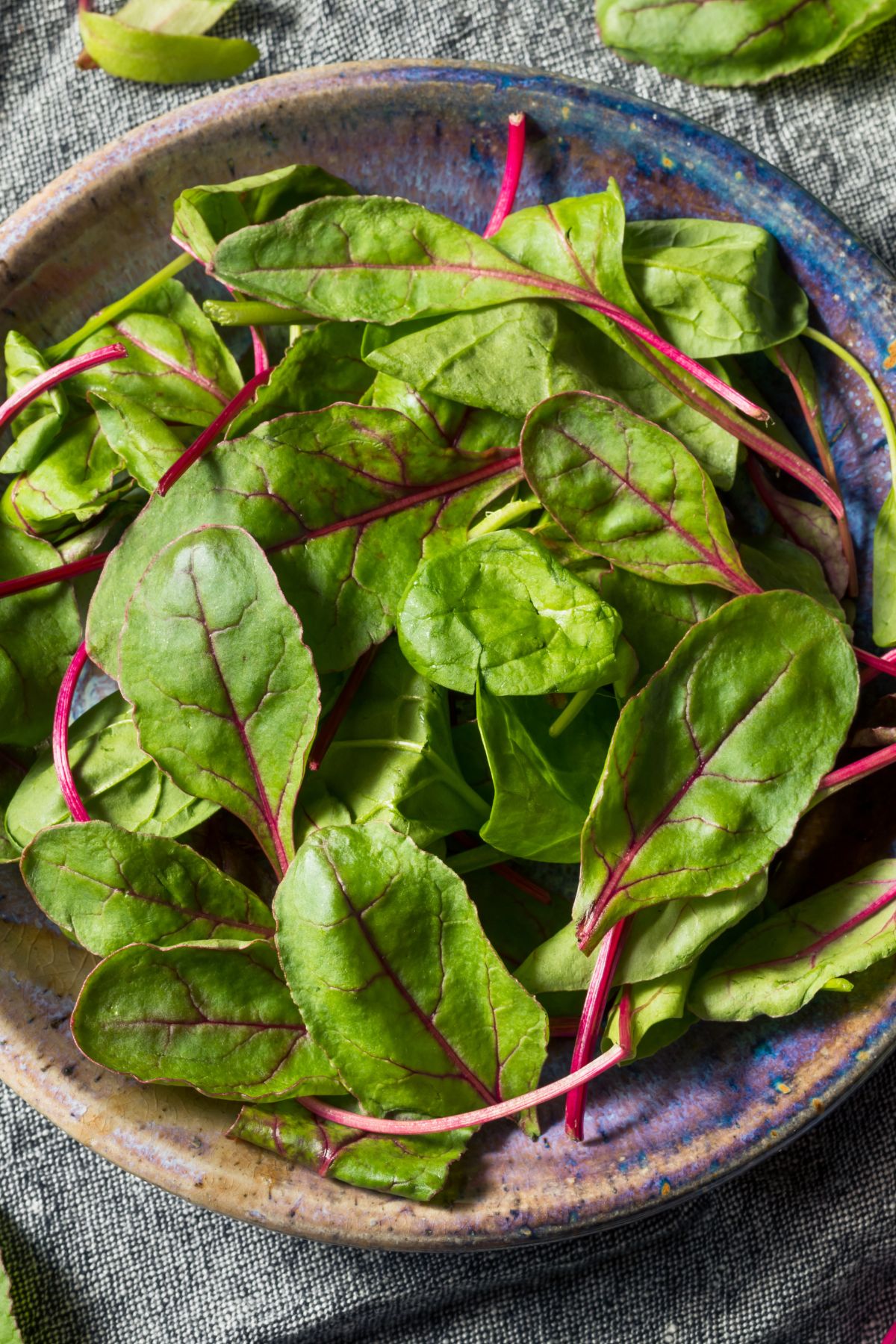
Pros
- High in vitamin A and fiber
- Great way to reduce food waste
- Easy to find and budget-friendly
Cons
- High in oxalates
- Strong flavor
- May not blend smoothly
Everyone knows that beets are good for you – but the greens tend to get overlooked. Yet beet greens are a great source of vitamins, with just one cup of cooked greens providing 220% of the DV for vitamin A, 17% of the DV for fiber, and 37% of the DV for potassium.
A sustainable choice that makes use of an ingredient that may otherwise be wasted, beet greens are relatively mild in flavor, with none of the bitterness of kale or dandelion. This means that they can be enjoyed alone, or pair easily with other ingredients without affecting their flavor.
You can also add beet juice or beet juice powder to your smoothies if you can’t find fresh beets or beet greens (learn more about the health benefits of beet juice).
13. Microgreens
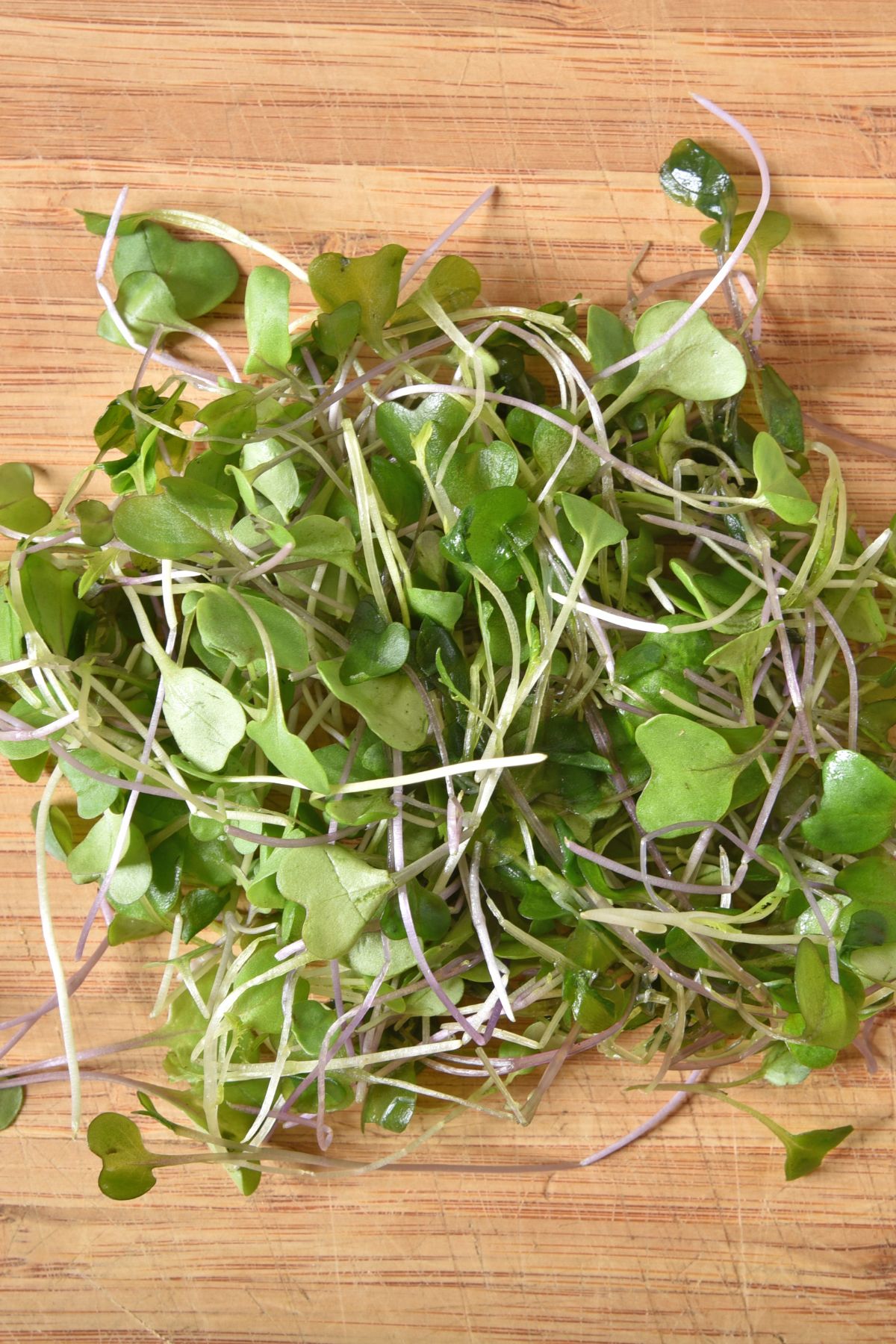
Pros
- Very nutritious
- Offers flavor versatility
- Considered a superfood
Cons
- May be expensive
- Can be strong in flavor
- Harder to find at the store
These immature greens produced from the seeds of vegetables or herbs were once consigned to use only as decoration for other dishes. But it has since been discovered that microgreens deliver all sorts of incredible benefits and are totally wasted when used merely as a garnish.
Containing up to forty times more nutrients than their more mature counterparts, they make a great way to significantly boost the nutritional profile of your smoothie.
There are lots of different varieties available so you might want to experiment to find the flavors you prefer. Compared to mature greens, microgreens can actually be quite mild in taste. You may, therefore, find the microgreen version of veggies like broccoli and Swiss Chard more palatable in your smoothies than the fully grown leaves.
See my list of the best microgreens to eat and grow.
Recommended recipe using microgreens: Broccoli Sprout Smoothie
Bonus: Moringa
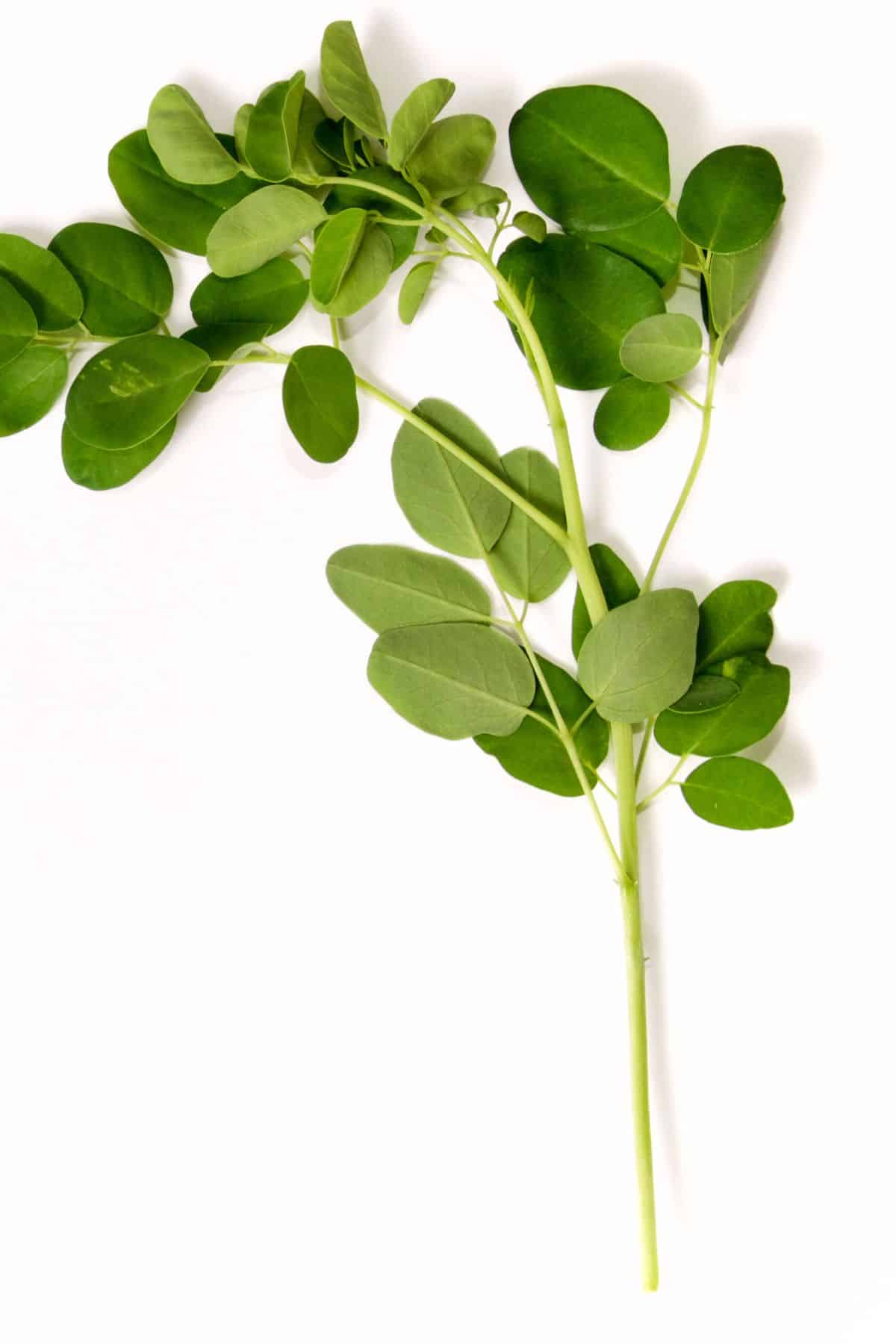
Moringa is a plant that has been studied for its antioxidants and other health properties.
This list is my no means comprehensive. You can explore other green vegetables to use in smoothies.
See my Moringa Smoothie recipe.
Tips to Make Green Smoothies
- Use cold ingredients, like frozen fruits or chilled liquids, to help ensure your smoothie remains refreshing without diluting it with too much ice.
- Use a high-speed blender to make sure that ingredients like leafy greens or seeds get fully blended and creamy. I use a Vitamix!
- Balance your ingredients so it’s green, but not too green! Start with a 1:2 ratio of vegetables to fruit to ensure your smoothie doesn’t taste like cold vegetable soup. Fruits like banana, cherries, and mango really help mask the flavor of the greens.
- Add superfoods like protein powder, cocoa powder, chia seeds, flaxseeds, and broccoli powder to add nutrition to your green smoothie.
- Rotate your greens to ensure you aren’t getting too much of anything in your smoothie concoction. For instance, try baby kale, rainbow chard, dandelion greens, or collard greens instead of spinach.
Green Smoothie Blending Advice
- Layering is key meaning that you should start with liquids at the bottom, followed by soft ingredients, and finish with harder, frozen items on top for efficient blending.
- Pulse when starting to blend. For tougher ingredients like kale or frozen fruit, begin with quick pulses to break them down before continuous blending.
- Try to use frozen fruits to achieve a thick and chilly texture without watering down the flavor with ice.
- Avoid overloading the blender which can make it really hard to fully blend the smoothie. Try not to fill past the “max” line on the blender pitcher.
- Rinse and clean your blender right after use to prevent ingredients from drying and sticking, ensuring longevity and easy maintenance.
FAQs
Certain vegetables have a stringy, fibrous texture so they just don’t blend very well! Unless you know your blender is powerful enough to pulverize them, you might want to avoid things like fennel, string beans, celery, and sugar snap peas.
Green leafy vegetables tend to be high in dietary oxalate – sometimes known as oxalic acid.
This naturally-occurring compound is considered an “anti-nutrient” because it can stop your body from absorbing calcium properly. It may also increase how much oxalate is in your urine. This may lead to the development of some types of kidney stones.
People who are at risk from these conditions are usually advised to limit their oxalate intake by their medical provider. This means that green smoothies may not be ideal for them.
While it is always good to confirm your dietary choices with a medical professional, the vast majority of people can safely enjoy green smoothies without worrying about oxalates. Indeed, they are so rich in vitamins and minerals that it is likely the benefits will outweigh any risks!
That being said, there are ways in which you can minimize your risks from oxalates whilst still enjoying green smoothies.
Try to use a variety of greens in rotation, rather than always sticking to the same one. This will give you access to a broader spectrum of nutrients and prevent you from consuming too much of any single anti-nutrient.
Consider steaming your greens before adding them to your smoothies. This will reduce the oxalates.
Pick the leafy greens that are lowest in oxalates. These include kale, bok choy, broccoli, Romaine lettuce and zucchini.
Drink plenty of water – especially if you have kidney stones – and ensure that your diet contains lots of calcium to compensate for any reduction in absorption.
Yes! Adding protein powder is an excellent way to balance the macronutrients of your smoothie and to make them a meal replacement. Protein powder may also help keep your blood sugar in check.
Check out my lists of the best paleo protein powders and the best protein powders for pregnancy.
Yes, but it depends on what you put in your green smoothies and what else you are eating. But, in general, eating at least one green smoothie a day can be a healthy way to support weight loss.
I hope you make this recipe! If you do, please leave a comment and a starred review below.
And, consider following me on social media so we can stay connected. I’m on Facebook, Pinterest, Instagram, and YouTube!
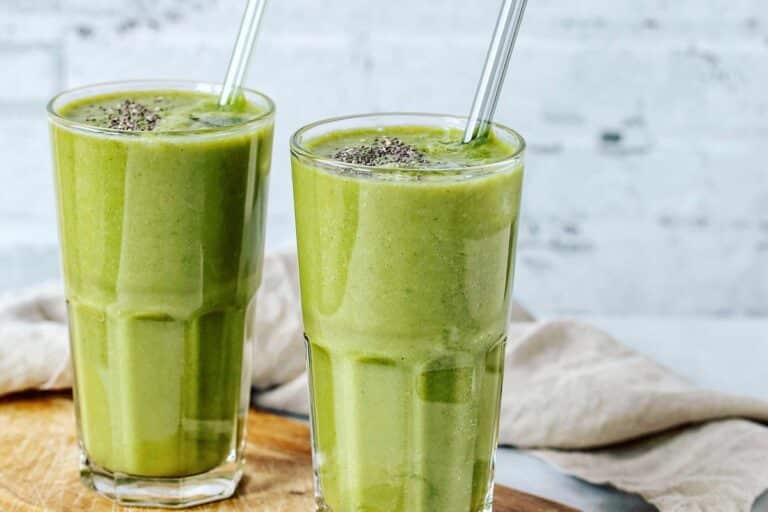
Basic Green Smoothie Recipe
Start your green smoothie journey with this easy recipe. It’s a quick way to get nutrition and a boost of energy. You can’t even taste the spinach in this delicious Green Smoothie recipe.
- Total Time: 7 minutes
- Yield: 2
Ingredients
- 1 large frozen banana, broken in half
- 1 cup unsweetened almond milk
- 1/2 cup unsweetened Greek yogurt
- 1 cup frozen strawberries
- 2 cups baby spinach (packed; about two handfuls)
- 1 tablespoon chia seeds
Instructions
- In the base of a blender, combine the banana, almond milk, yogurt, strawberries, spinach, and chia seeds.
- Lock on the lid and blend on high until fully combined, about 30-40 seconds.
- Serve immediately.
Notes
- Feel free to add 1-2 teaspoons of honey if you want a sweeter smoothie.
- You can also add up to 2 scoops of your favorite protein powder to increase the protein content of this recipe.
- Instead of the spinach, you can use baby kale or whatever type of green leafy vegetable you like.
- If you are on a dairy-free diet, feel free to use a dairy-free yogurt in place of the Greek yogurt.
- Prep Time: 5 minutes
- Cook Time: 2 minutes
- Category: Smoothie
- Method: Blender
- Cuisine: Healthy
- Diet: Vegetarian
Nutrition
- Serving Size: 1/2 of recipe
- Calories: 212
- Sugar: 15 g
- Sodium: 144.1 mg
- Fat: 7.6 g
- Saturated Fat: 2 g
- Carbohydrates: 28.8 g
- Fiber: 6.2 g
- Protein: 10.4 g
- Cholesterol: 9.3 mg
More Green Smoothie Resources You Might Like
- Benefits of Green Smoothies
- Best Green Smoothie Recipes
- Smoothies for Weight Gain
- Best Cancer Fighting Smoothies
- Best Dairy-Free Breakfast Smoothies
Don’t Miss These Smoothie Recipes!
Conclusions
If you find it hard to get enough green vegetables into your diet, then turning them into delicious smoothies is the perfect solution! Simple to make, they deliver a wide range of nutrients in a form that’s easy to consume on a daily basis. And with the addition of your favorite herbs, spices, or fruits, you can create lots of different flavors to keep your daily smoothie interesting and delicious.
Feel free to get creative with your smoothie ingredients to create the best green smoothies that will satisfy your taste buds and add more nutrition to your diet.
Don’t forget to join my newsletter list to get exclusive clean eating recipes and tips. The newsletter is 100% free with no spam; unsubscribe anytime.
About the Author: Carrie Forrest has a master’s degree in public health with a specialty in nutrition and is a certified holistic nutritionist. She is a top wellness and food blogger with over 5 million annual visitors to her site. Carrie has an incredible story of recovery from chronic illness and is passionate about helping other women transform their health. Send her a message through her contact form.
Note: this post is for informational purposes only and is not intended as medical advice. Please consult your healthcare provider for recommendations related to your individual situation.


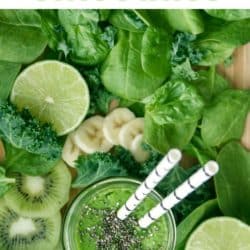
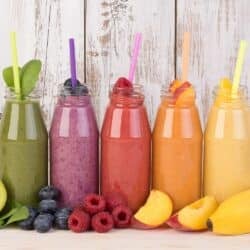
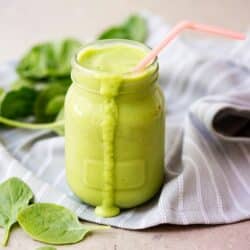
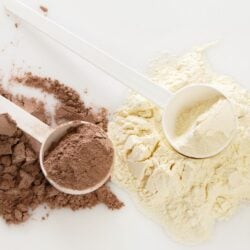
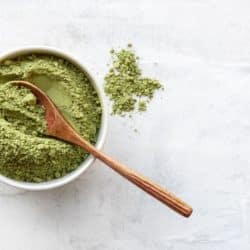




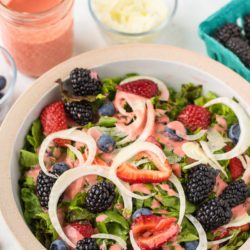









Great article. Well researched. Informative. Concise. Pros and cons are very helpful. Exactly answered my google search question
I make a green smoothie every morning, it keeps me so healthy!